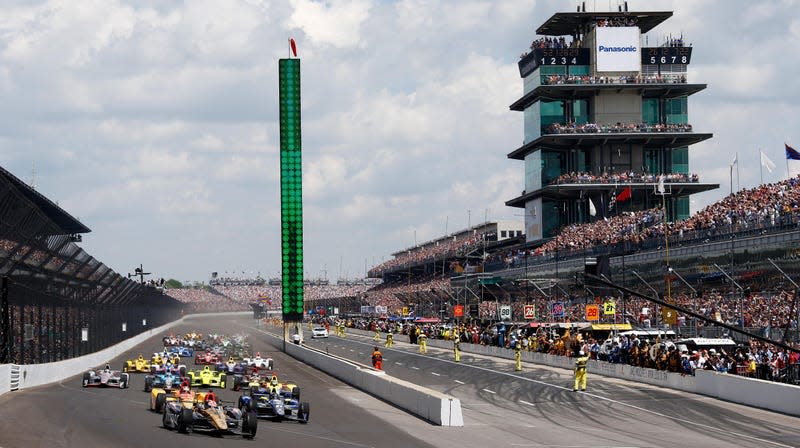This Is Why IndyCar Is Named 'IndyCar'

Can you name a motorsport series that’s named after one of its races? There is, really, only one series that comes to mind: IndyCar, the American open-wheel racing series that’s seemingly named after both its primary location (Indianapolis, Indiana) and its biggest race (the Indy 500). But how did that happen? How did the sport come to pick such a perfect name for itself? As we head into Indy 500 season, I knew I wanted to find out.
At its core, the name “IndyCar” comes down to decades of infighting amongst the various different series that have comprised American open-wheel racing.
Read more
In order to understand the ultimate name, though, we need to run through a very brief history of American open-wheel. Basically, the championship we know as IndyCar today really developed with the Indianapolis 500 as its grounding event. The Indy 500 used to be sanctioned by AAA (yes, that AAA), but after the 1955 Le Mans disaster that killed scores of spectators and transformed the perception of motorsport around the world and the death of Bill Vukovich during the 500, AAA withdrew from racing.
The following year, in 1956, the United States Auto Club (USAC) took over sanctioning the race. USAC was formed by Indianapolis Motor Speedway president Tony Hulman, alongside a group of other folks interested in racing.
That response does make sense; after all, why would you want to leave the running of your race in the hands of a totally different group of people if you had the opportunity to just take over and do it yourself.
But even then, USAC didn’t call American open-wheel racing “IndyCar.” Instead, it founded the United States National Championship, which was contested by open-wheel race cars. American open-wheel also went by the nickname “championship auto racing,” which morphed into “champ car.” But because the cars also raced at Indianapolis, which was the primary event of the year, it also became known as “Indy car racing.”
As you might imagine, though, the fact that Tony Hulman ran both the Indianapolis Motor Speedway and the entire series that competed in the 500 raised some conflicts of interest. In 1979, a group of racing team owners decided to defect and create their own series, which they called Championship Auto Racing Teams (CART). Basically, a lot of owners were upset with the way USAC handled important racing decisions, and American racing legend Dan Gurney rallied support to create a new series that was sanctioned by a group of team owners that all had influence over major decisions.
The original intention behind CART wasn’t to become a new series; it was to be an advocacy group that could help promote USAC races and make the voices of the team owners heard. But in 1978, after Gurney put his ideas to paper, eight USAC officials were killed in a plane crash, which created a power vacuum that turned the entire season into a disaster. Gurney presented his ideas to USAC at the end of the season, and USAC rejected them wholesale. CART left USAC, opting instead to become a series sanctioned by the Sports Car Club of America.

 Yahoo Autos
Yahoo Autos 